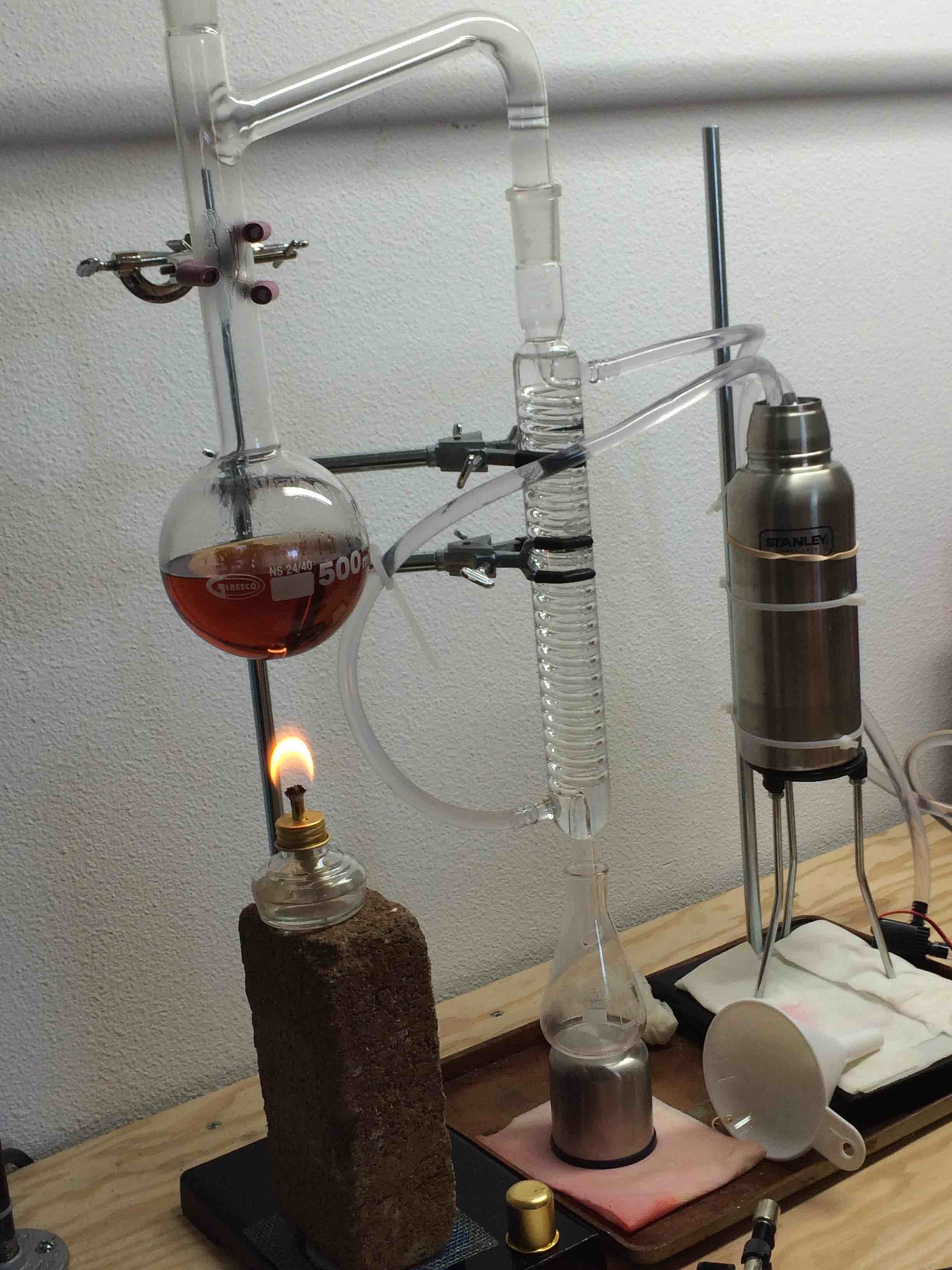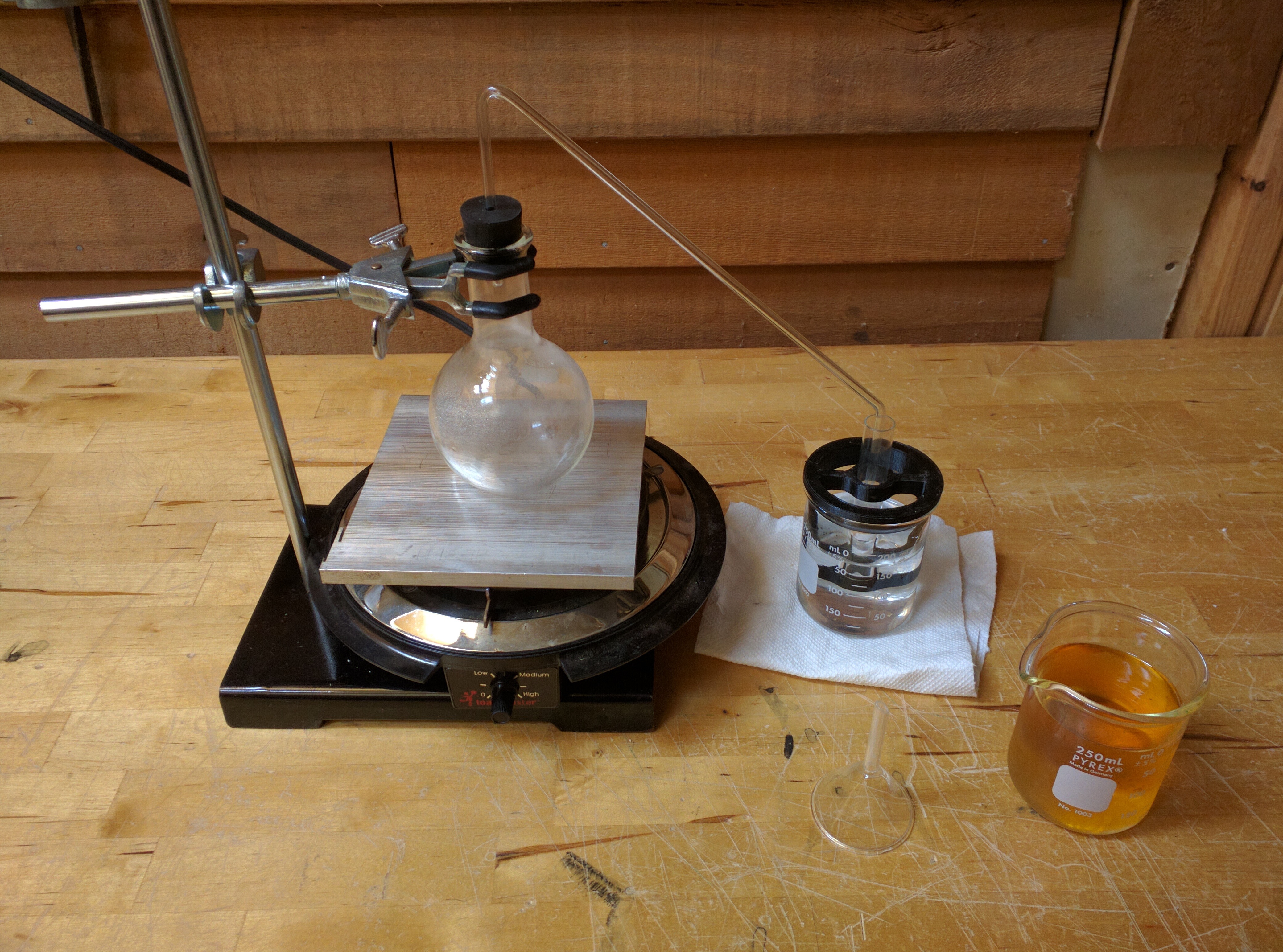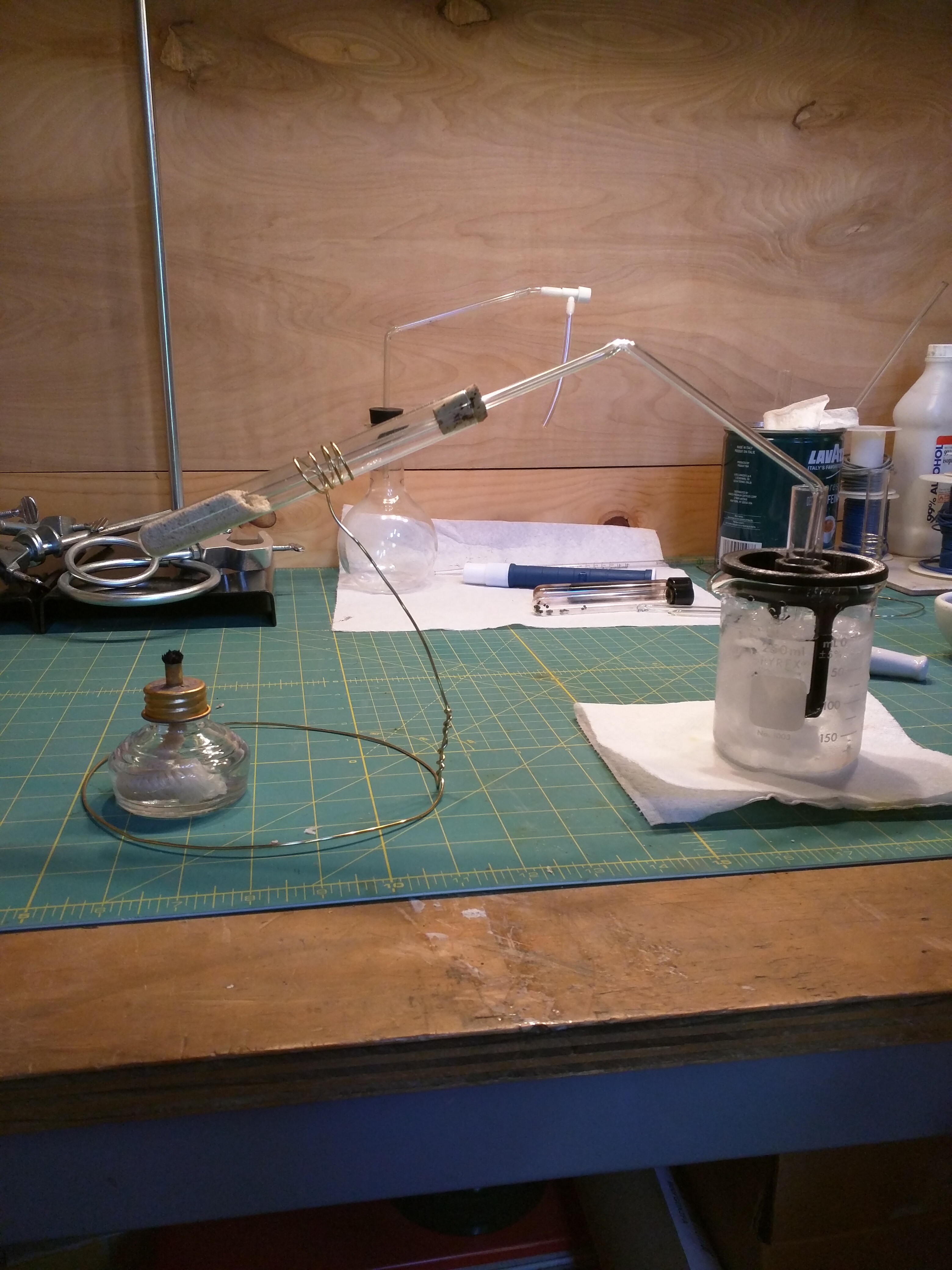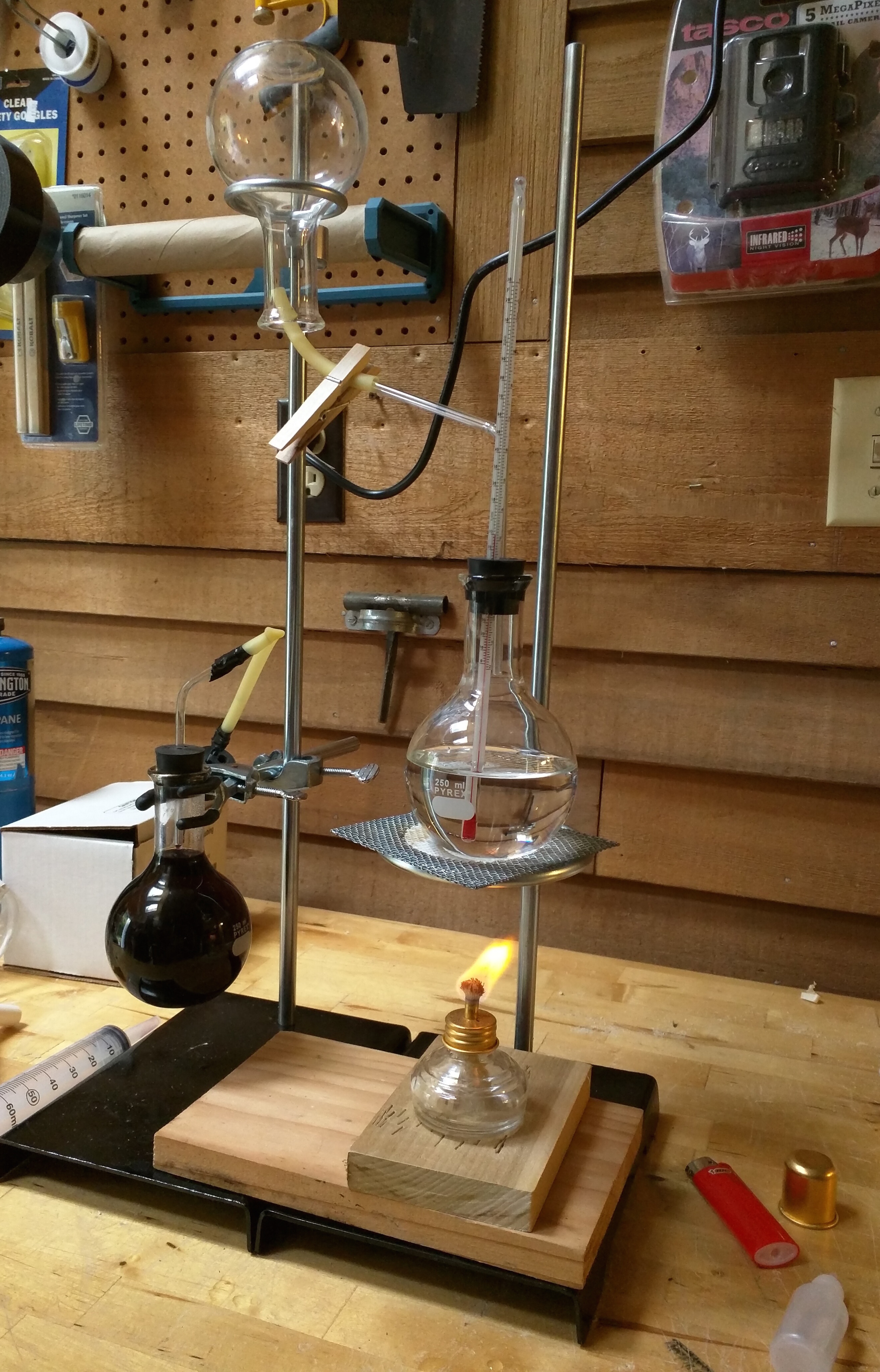Homemade Chemistry Set
These experiments use more complicated slightly more complicated. They start using glassware, and a heat source. So make sure to provide adult supervision and use proper safety equipment and lab procedures.
Distillation Experiments
Distillation is a process for purifying a liquid, using selective heating or cooling to separate the liquid into its component substances. The process exploits differences in volatility of the fluid mixture's components to create separation.

Making "Rocket Fuel"
For this distillation experiment you start with some cheap whisky or bourbon. The important parts are that it not be a clear fluid, and not be flammable. You let the young scientist test to see that the colored fluid is not flammable. Then you distill out some high proof clear alcohol, which is flammable. The color change of the distilled fluid bing clear, and the remaking fluid becoming darker in color, helps to bring home that we are separating out part of the fluid. Flammability can easily be tested with q-tips that have been soaked in both fluids and held over the lamp.
To make it extra exciting we did the experiment where we built a soda bottle rocket that was launched from alcohol fumes being detonated first - so we really were making "rocket fuel"!

Distilling Apple Juice
I got the idea for distilling apple juice from the MEL science kit on distillation. The MEL science kits seem like a really interesting, new, spin on science kits. I do not like the looks of some of their equipment and experimental setups, but that said they do include all the equipment needed to do some really interesting experiments for really reasonable price.
In this case, you can do distillation of water and some esters from apple juice. The result is an aromatic clear liquid that clearly smells like apples.
The aluminum plate in the picture is because I wanted to use an electric hot plate as opposed to a flame for heating the boiling flask.
Thermolysis Experiments (Thermal Decomposition)
Thermolysis, or thermal decomposition, describes chemical decomposition caused by heat. A substances decomposition temperature is the temperature at which the substance starts to chemically decompose.

Wood Pyrolysis
Pyrolysis is a type of thermal decomposition where organic material is heated to produce desirable gas and liquid byproducts, and leaving behind a solid residue richer in carbon, or char. Industrially, wood pyrolysis is used to produce a number of byproducts including methanol from wood. I got this experiment for capturing methane from wood pyrolysis from the Golden Book of Chemistry Experiments (Pg.89).
Solubility Experiments
Solubility is the property of a solid, liquid, or gaseous chemical substance called solute to dissolve in a solid, liquid, or gaseous solvent.

Ammonia Fountain
An Ammonia Fountain works by injecting a small amount of water into a vessel filled with ammonia gas. Ammonia has close to a 10,000 to 1 absorption ratio in water. So even a few drops of water will absorb all the ammonia in the vessel. The absorption of the ammonia creates a vacuum that draws a PH indicating fluid from another vessel up into the reaction vessels. When the PH indicator enters the reaction vessel it changes color. The end effect is a fountain of liquid that is changing color as it enters the reaction vessel. It is a beautiful experiment.